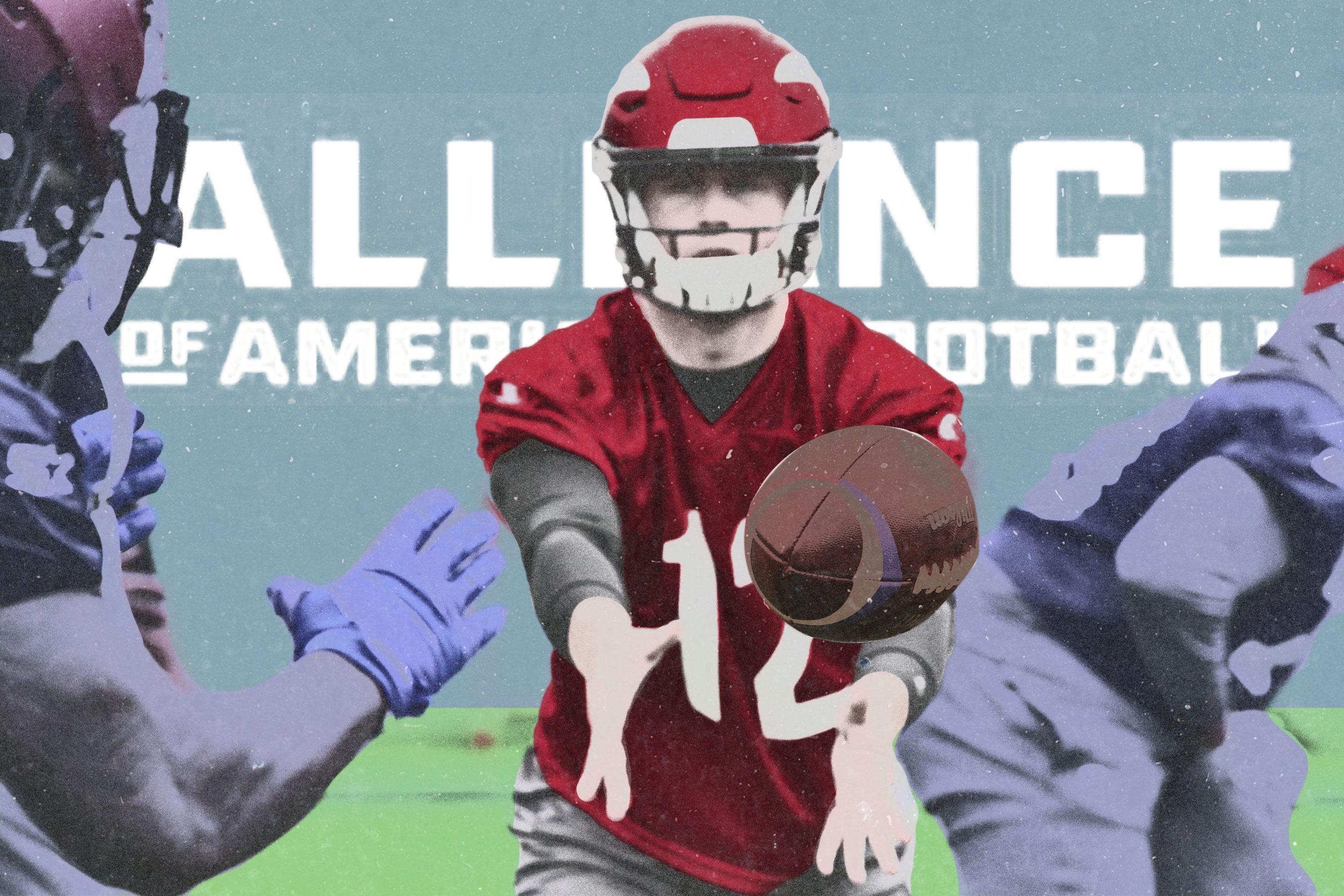
The inaugural season for the Alliance of American Football begins on Saturday, and as long as the games are even mildly entertaining, we won’t have to pretend to care about the NFL combine anymore. The new league—which insists on being called “The Alliance”—is not to be confused with the XFL (started by WWE godfather Vince McMahon), the Arena Football League (an alternate reality where Jon Bon Jovi is Robert Kraft), or the defunct United States Football League (a 30 for 30 that somehow turned into essential prologue for this chapter in American history). History says this league will not survive, but it might be a lot of fun if we accept it for what it is: the junk food that can sustain our appetite until the NFL draft.
It’s the brainchild of Charlie Ebersol, son of NBC heavyweight sports executive Dick Ebersol. It’s being framed as a minor league rather than a competitor to the NFL and will air on CBS and NFL Network. In other words, it’s not just junk food—it’s junk food that is already in your kitchen daring you to eat it (in this metaphor, the NFL combine is the congealed-insect-Jell-O protein bars from Snowpiercer).
There are two games at 8 p.m. ET on Saturday (the San Diego Fleet at the San Antonio Commanders and the Atlanta Legends at the Orlando Apollos) and two more games on Sunday (Memphis Express at Birmingham Iron at 4 p.m. and Salt Lake Stallions at Arizona Hot Shots at 8 p.m.). Here’s what you need to know before you tear into football’s version of off-brand potato chips.
The Players
The teams are in markets with big college football followings, and the league put the players who went to nearby colleges on nearby teams (e.g., the Birmingham Iron have a lot of former Alabama and Auburn players). The result is a who’s who of What happened to that guy?
- Former no. 3 overall pick Trent Richardson (who was released from the CFL’s Saskatchewan Roughriders before signing with the Birmingham Iron)
- Michigan quarterback Denard Robinson (Atlanta Legends)
- Auburn kick-six pantheon-level college football legend Chris Davis (Birmingham Iron)
- Garrett Gilbert, the sacrificial lamb who replaced Colt McCoy in the 2010 BCS championship game against Alabama (Orlando Apollos)
- Matt Asiata, the ultimate fantasy football touchdown vulture (Salt Lake Stallions)
- Christian Hackenberg, the Penn State god and perhaps the worst second-round draft pick of the decade (Memphis Express)
- Not one, but two former Chargers kickers in Nick Novak (Birmingham Iron) and Younghoe Koo (Atlanta Legends)
- Michael Vick (!) is the Atlanta Legends’ offensive coordinator
That list doesn’t even include the legitimately famous coaches, including Steve Spurrier, Mike Martz, Mike Singletary, and Rick Neuheisel, who’ve been hired in the league. The entire exercise is a Mad Libs of NFL washouts and college football legends.
But far more interesting than any of the people you’ve heard of are the players you haven’t. The quarterback for the Arizona Hotshots entered his senior year at Wake Forest with an offer to work finance in the debt division of Barclays and had the offer put on hold indefinitely when execs learned he might make the New York Jets. (He did not. It is unclear whether the offer still stands.) Luis Perez, the quarterback for the Birmingham Iron, was a competitive bowler in high school who competed in tournaments across the West and didn’t play quarterback until he got to Southwestern College where he was the ninth-string quarterback. After watching some YouTube videos and transferring to Texas A&M–Commerce (not to be confused with Texas A&M!) he won the Division II player of the year award and led the team to a national championship in 2017.
Team Logos Ranked
- Arizona Hotshots

Their logo is literally fire.
2. Memphis Express

The New York Jets should steal this logo.
3. The Orlando Apollos

Their mascot is firing a weapon at the opponent. Plus it has a built-in celebration:
4. San Diego Fleet

Actually, I guess weapons are a theme.
5. San Antonio Commanders

You could convince me these should be higher up.
6. Atlanta Legends

The logo sucks (and screams Saints Row vibes) but the team is smart enough to just put the word “Legends” on everything they want to sell.
7. Salt Lake Stallions

It’s unclear what this has to do with a horse. The blue part is the mane, I guess, so why does it look like a claw? Huge mistake to not just hire the designers of the Salt Lake City Olympic mascots.
8. Birmingham Iron

No logo is a choice. Calling the team the “Iron” and not even making the helmet iron-colored is a disaster. The Cleveland Browns also have a color in their name and instead put a different color without a logo on their helmets. Imagine building a league from scratch and being inspired by anything the Cleveland Browns have done.
The Rules
Many people believe that we are being judged by someone above. The AAF is making it a policy. They are putting a ninth referee for each game in the press box, dubbed the “sky judge,” to correct “obvious and egregious” mistakes.
“If you get a helmet-to-helmet spear and it’s not called on the field, it can be picked up by the ninth official,” former NFL vice president of officiating Mike Pereira, who is consulting for the AAF, told the Associated Press. “He has the ability to do it in real time. It doesn’t go to replay. ... He can call down to the field and say, ‘Hey, spearing on no. 33 of Birmingham, 15-yard penalty, let’s go.’”
If this league has one influence on the NFL, this might be it. Maybe they should recruit Sean Payton.
A more obvious, on-field change will neuter kickers. (No, not literally—you’re thinking of the Puppy Bowl.) There won’t be kickoffs, extra points, or onside kicks. Teams will start from the 25-yard line and will have to go for two points after touchdowns. Onside kicks will be replaced by a fourth-and-12 try from a team’s own 28-yard line to keep the ball. Field goals are allowed during regulation but banned in overtime, where each team gets one try from first-and-goal at the 10-yard line, and games can end in ties. It’s all in an effort to make the game quicker and more streamlined. The play clock is 35 seconds instead of 40, and the goal is to get games finished in two and a half hours instead of three.
Competition breeds innovation. The NBA’s 3-point shot came from the ABA. The NFL took two-point conversions and instant replay from the USFL. The four major U.S. sports leagues are monoliths in their present form, but they’ve historically been the most nimble and creative when faced with competition. The AAF isn’t going to replace the NFL, but it could spark the innovation the league has lacked for decades.

